The Benefits of Under-Center Play-Action
Play-action is a quarterback’s best friend. It forces hesitation in the pass rush and influences defenders in coverage, often leading to defined reads and easy completions. Doing it from under center can have an even greater impact on the defense.
The simple reason why is that it takes more time for the play-fake to define itself from under center than it does out of shotgun. And that means defenders trying to read the play and see if it’s a run or pass spend more time waiting than going. That creates larger windows and slower pass rushes.
Get a Founding Member Subscription to access our Playbook and have 68 breakdowns like this at your fingertips:
Take this play from the 2022 season between the Giants and Colts, for instance. New York would break down the Colts’ coverage with a post-wheel route combination. However, they used several tactics to throw Indianapolis off the scent.
First, they didn’t run the route combination in the conventional way. Instead, they had tight end Daniel Bellinger align in the backfield as a fullback and sneak out into the secondary to run the wheel route:
To set up the route combination, the Giants would use a run fake involving two potential ball carriers - wide receiver Darius Slayton off of orbit motion, and running back Saquon Barkley:
Utilizing under-center play-action allowed this to be a slow-developing play-fake with two potential ball carriers, and that made it more difficult for the Colts to decipher everything that was going on. It forced their second-level defenders to keep their eyes in the backfield for just a split second longer than usual:
That allowed Bellinger to sneak past them:
Since Bellinger was coming from the backfield, the cornerback to that side (Stephon Gilmore) took longer to realize that there was another route threatening his deep zone:
With Gilmore removed and the underneath coverage sucked up towards the line of scrimmage, Bellinger was open for an easy 24-yard completion:
Take another look from the end zone angle. Watch how long it took for that D-line to start rushing the passer and for those linebackers to start dropping into coverage as they tried to figure out what was going on in the backfield:
Here’s another great example from Week 1 of the 2023 season in a game between the Lions and Chiefs.
Similar to the Giants, Detroit used motion and the prospect of two potential ball carriers on this under-center play-action:
Again, notice how the play-fake sucked those Chiefs linebackers up to the line of scrimmage as they were trying to decipher the play:
The under-center play-action also gave the routes more time to get downfield before the defense was aware that this was a pass. That created an even greater distance between the primary target and the underneath coverage:
Finally, notice how quickly Jared Goff got his head around and set up to throw:
That left no time for those Chiefs linebackers to drop out into coverage once they realized it was a pass. The result was a large window and an easy completion for a big play:
It seems the under-center element of the passing game is becoming less and less prevalent in today’s NFL. But there are some teams who still use it, and use it effectively, especially when incorporating play-action.


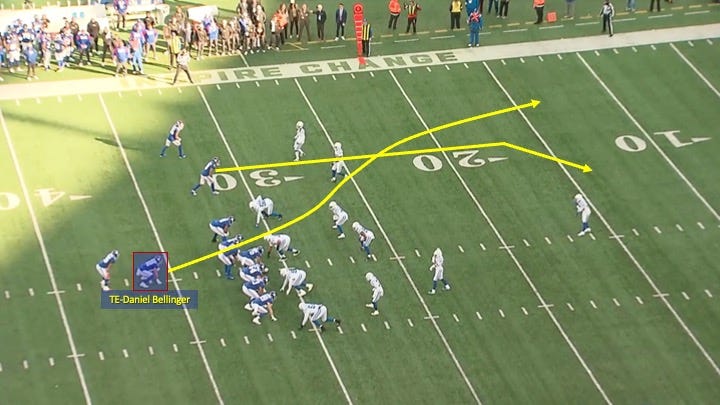

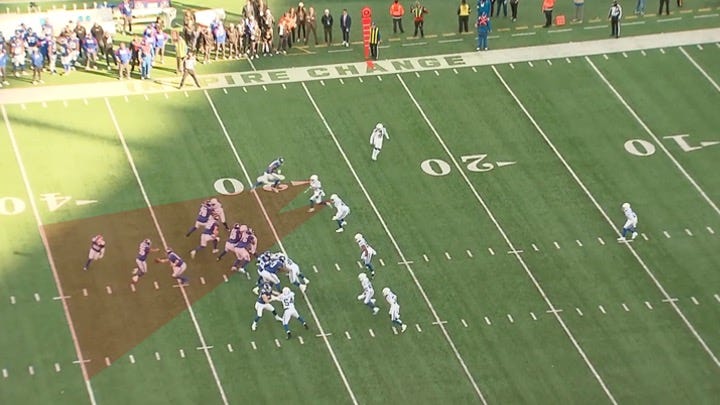



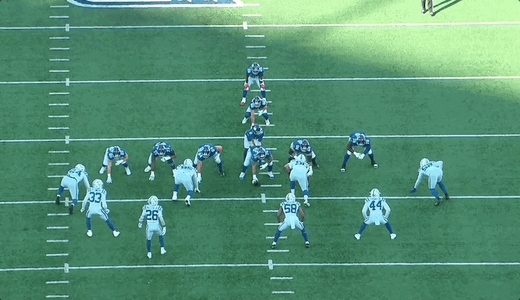
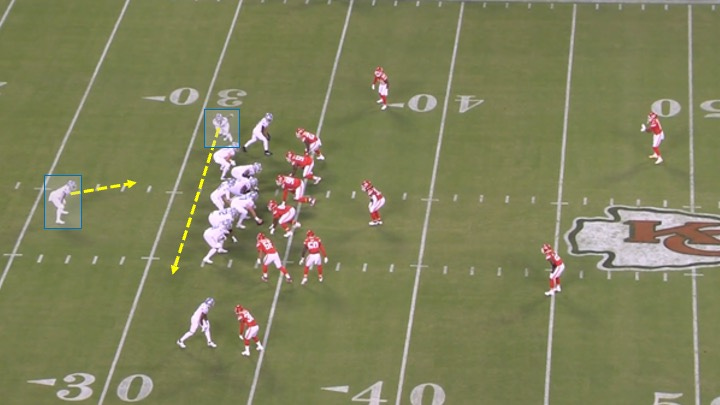
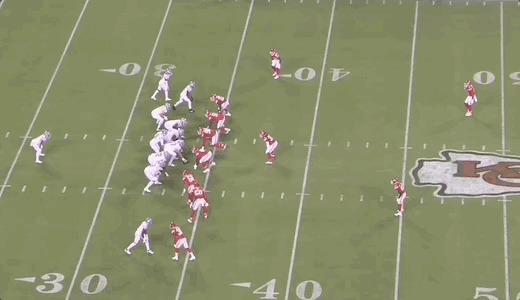


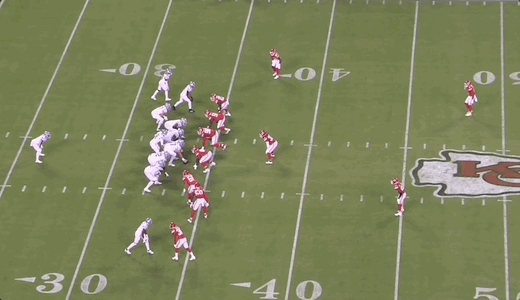
This is a crazy thing to me, because this is an area where the data and the film seem to be exactly in line. The film guy and the data guy are saying the same thing. Play action passing is systematically more productive than standard passing, independent of how good your rushing offence is. It's infuriating to hear NFL commentators in 2025 still talk about how running opens up the play action pass, when as you've shown here, it's not running that opens up the play action pass. The play action pass is its own weapon.
Perhaps you can give me some expertise here Nick, because the NFL data world has been kicking and screaming for as long as there's been an NFL data world, yelling at teams to play action pass more. There is the slight hiccup of actual rushing plays being more productive out of the shotgun, and play action passes being more productive under centre, but there would surely be a way to fix this in order to get the single most productive type of play call (which is play action pass) into the game plan more.
Not even 20 percent of all drop backs in the NFL right now are play fakes, and to me it just seems like value being left on the table. Some QBs are not great in play action (I think Justin Fields might just be the worst PA passer in NFL history), but virtually all QBs are better in the context of play action than outside of that context, and a healthy amount of them are dramatically better on a per play basis. Look at Lamar Jackson's numbers on PA drop backs, primarily his three sacks on 115 drop backs (holy cow), and compare them to his numbers with no play fake. It's a fundamentally different (better) player. This begs the question why Lamar only gets the benefit of a play fake on 15 percent of his touches.
This is where I ask for your expertise Nick. Why is there not more play action throwing? Either for the Ravens in specific or the NFL in general. Perhaps your perspective can offer a rational answer on this, because mine consistently comes up dry. As far as I'm concerned, if there's a point of diminishing returns to faking the run, the league hasn't reached it yet, and should keep running more and more play fakes until they do. Instead, the league consistently allows a gap to exist between the EPA/Play on play action passes, and the EPA/Play on standard passes, without mixing more of the productive ones into their game plans, and I just don't understand it.